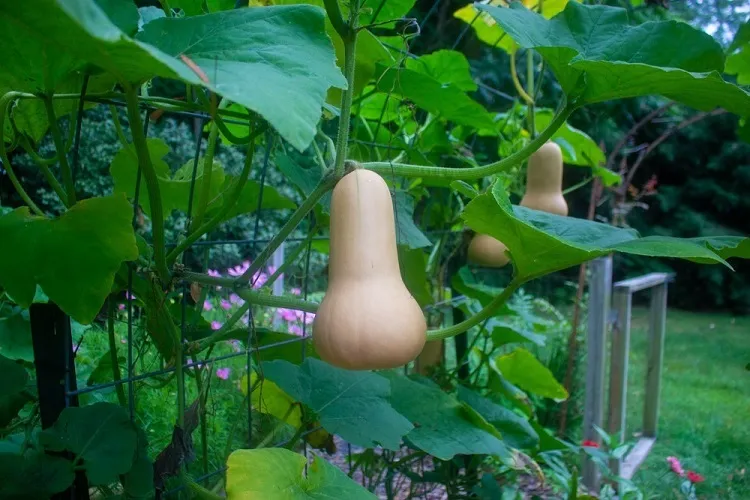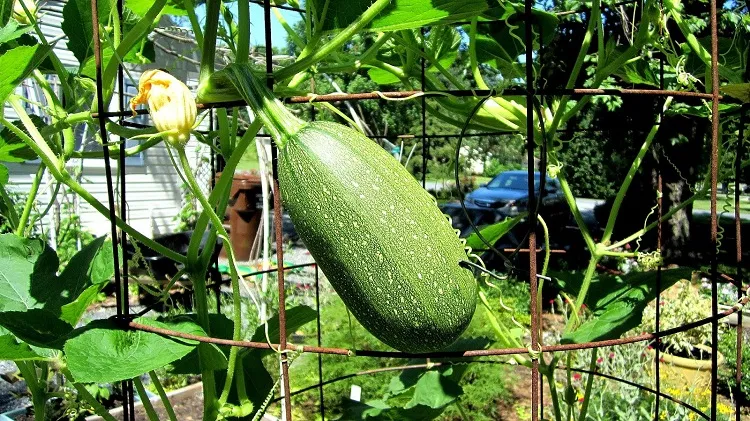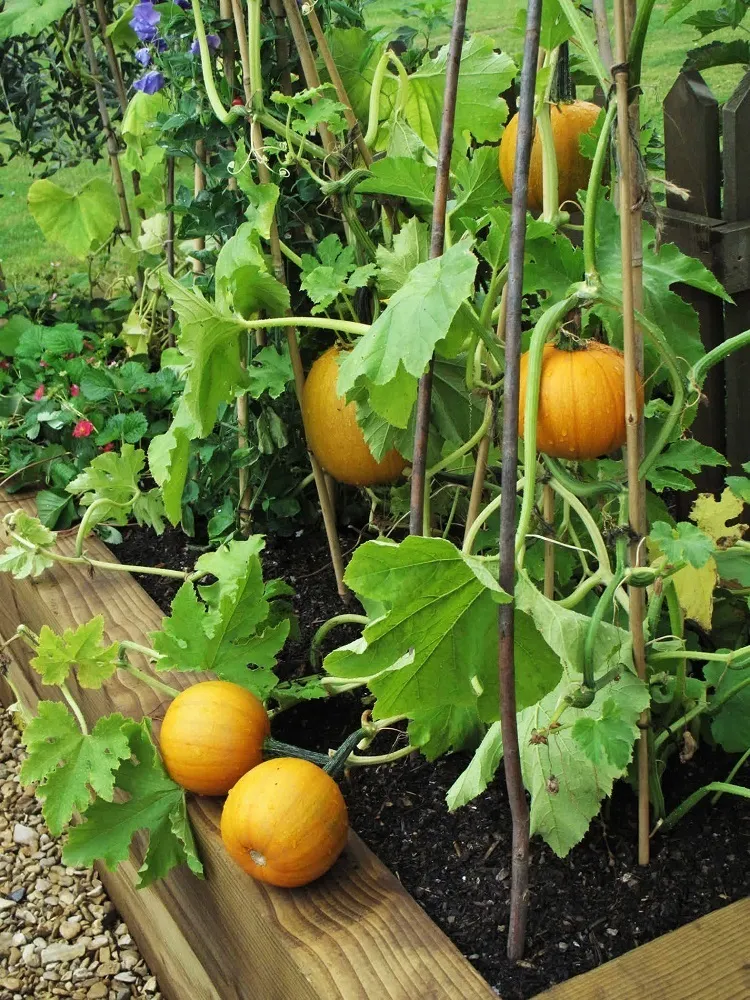Yellow squash is a delicious and nutritious fruit that is easy to have and care for in your home garden. Traditionally, it is grown in a sprawling manner on the ground, but recently, more and more gardeners are turning to the alternative vertical methods, with which the plants develop, crawling upwards on some supporting fences or trellis. We invite you to explore with us the benefits of growing yellow squash vertically, and we’ll provide you with some tips on how to do it more effectively.
What are the Benefits of Growing Yellow Squash Vertically?
As we mentioned above, yellow squash is usually planted on the ground and its stems develop, sprawling in all directions. But is it better to grow squash vertically, and why? This approach has several advantages over the traditional horizontal method. First and foremost, vertical growing saves space. By training the plants to crawl up a trellis or fence, you can maximize your garden’s area and increase the yields. Growing yellow squash vertically is particularly beneficial if you have a small garden. In addition to saving space, the vertical method also helps to reduce disease and pest problems. When squash plants are grown on the ground, their leaves and fruits come into contact with the soil, which can harbor pathogens and pests. Whereas, by growing yellow squash vertically, you can keep them off the ground and away from potential disease.
What are the Main Steps of Growing Yellow Squash Vertically?
You’ll need some advices on how to grow your yellow squash vertically step by step. This is a straightforward process, and here is the guide to get you started:
- Choose the right variety. Look for a compact or bush variety that has a more upright growth habit, such as “Saffron,” “Sundance,” or “Yellow Bush.” They can be trained to grow up on a trellis or fence.
- Prepare your soil. Squash plants prefer well-draining soil that is rich in organic matter, so add compost or well-rotted manure.
- Install or build a trellis or fence. This is needed for the plants to climb. You can build one from twine or wire. Ensure that the trellis or fence is sturdy enough to support the fruits‘ weight of the growing plants.
- Plant the squash. Plant your squash seeds or seedlings at the base of the trellis or fence. Space the plants 18–24 in (45-60 cm) apart, and water them thoroughly after that.
- Train the plants. As the plants grow, gently tie the main stem to the trellis or fence using garden twine. Continue to do this for every 6–8 in (15-20 cm) of new growth.
- Provide support for the fruit. As the fruit begins to develop, provide support for it using pantyhose or netting. Tie the support material to the trellis or fence and gently loop it around the fruit.
- Harvest regularly. The fruit should be picked when it is young and tender, 6–8 in (15-20 cm) in length. Use a sharp knife or scissors to cut it from the plant.
Growing Yellow Squash Vertically in Containers
If you prefer, you may use the method of upward growing, after planting your vegetables in pots or other containers. Here are the steps of growing yellow squash in containers vertically:
- Choose the right container. It should be at least 12 in (30 cm) deep and 18 (46 cm) inches wide for growing squash, with drainage holes on the bottom. It’s better to choose the largest container you can accommodate.
- Fill the container with soil. Fill in with a high-quality potting mix, specially designed for vegetables. The soil should be well-draining, rich in organic matter.
- Install a trellis or fence. This should be done by attaching the trellis or the fence to the side of the container. Make sure that this structure is sturdy enough to support the weight of the growing plants and fruits when growing yellow squash vertically.
- Plant your squash. Plant your seeds or seedlings at the base of the trellis or fence. Space the plants 18–24 in (45-60 cm) apart, and water them thoroughly after that.
- Train the plants. As the plants grow, gently tie the main stem to the trellis or fence using twine or twist ties. Continue to do this for every 6–8 in (15-20 cm) of the stem, as it grows. This will encourage the plant to grow upwards and prevent it from sprawling on the ground.
- Support the fruit. As it begins to develop and then ripe, support its growth with pantyhose or netting. Tie this material to the trellis or fence and gently loop it around the fruit. This will help to prevent the fruit from becoming too heavy and falling off the plant.
- Water and fertilize regularly. Water the plants deeply once a week, or more often, if the soil is dry. Fertilize it every two weeks with a balanced fertilizer, following the instructions on the package.




